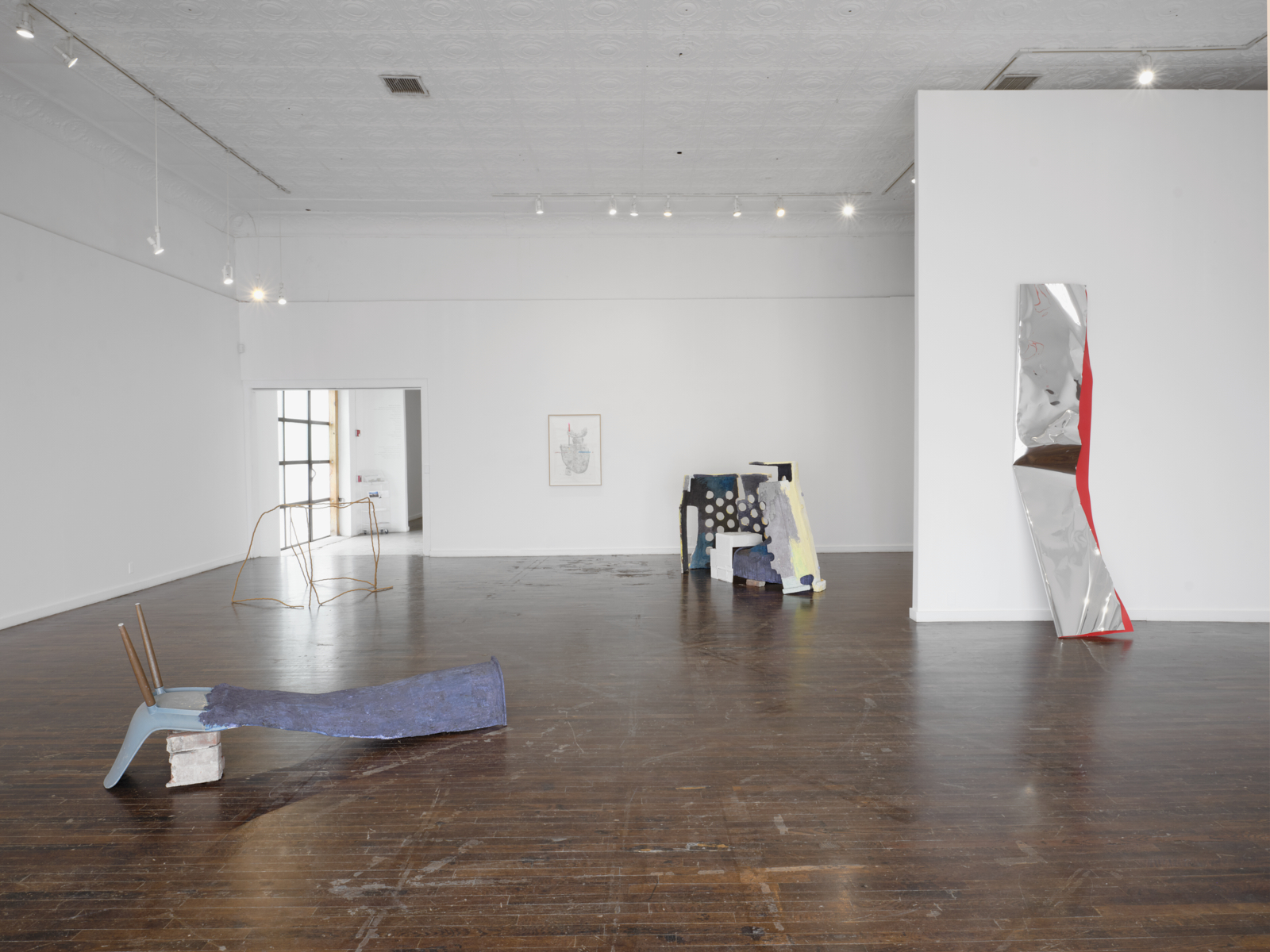Matthew Day Jackson at the MAMbo
24 Jan 2011
Matthew Day Jackson, The Tomb, 2010. Detail.
Found wood, plastic resin, stainless steel, glass, sycamore, scythe blade, neon tubes, Charles and Ray Eames leg brace, yarn, silver, tool dip, tiger eye, 126 ½ x 94 x 124 in. / 321,3 x 238,8 x 315 cm – 2500 kg. Ca.
The Flowering Trees Collection
Photo by Adam Reich / Courtesy of the Artist and Peter Blum Gallery, New York.
——————————————————————————-
We’re excited to announce that Ballroom Marfa alum Matthew Day Jackson’s exhibition In search of… will be featured at MAMbo, the Museo d’Arte Moderna di Bologna, from 27 January – 1 May 2011.
Read more about Day Jackson’s history at Ballroom here, here, and here.
And from MAMbo’s press release about the show:
MAMbo – Museo d’Arte Moderna di Bologna opens its 2011 programme with In search of…, the first solo show hosted by a European museum of the work of leading American emerging artist Matthew Day Jackson.
Taking his cue from our fundamental questions concerning human existence—who we are, where we come from, what lies ahead—the artist enacts an exploration of personal and collective myths through a selection of works spanning from 2007 to 2010.
The exhibition’s rich display wholly transforms MAMbo’s venue, making it vibrate with colors by applying a layer of special film on the lighting fixtures, which then reverberate with the whole chromatic spectrum; questioning it with the ambiguous presence of a special Foucault pendulum, hanging from 16 meters of height; animating it with machine-driven works powered by solar panels mounted on the museum’s terrace.
The red thread running through In search of… is Jackson’s video with the same title (2010), based on the format of a popular American TV show aired between 1976 and 1982 and hosted by Leonard Nimoy (Star Trek‘s famous Dr. Spock), investigating paranormal phenomena and mysteries. The film, divided into three parts by the interpolation of faux Audi commercials, includes footage from stock archives and from the Getty archives, staged interviews with intellectuals such as David Mindell (historian and engineer at MIT) or Alexander Dumbadze (writer and art historian), with a half-solemn, half-ironic background storytelling by David Tompkins [ed’s note: Tompkins works at the Chinati Foundation here in Marfa]. In the first part, anthropomorphic forms found in clouds moving around the Earth as seen from the moon raise questions on the myths traced in terrestrial landscapes. In the second part, the mysterious disappearance of Matthew Day Jackson is an opportunity to underline the complex nature of the objects we leave behind as witnesses to our existence. In the last part, some artifacts found in archaeological excavations reveal the existence of Eidolon, an ancient, now extinct civilization.
The situations narrated by the video reference the ways in which humans participate to contemporary culture and define themselves through the objects around them: both themes can be found in all the other works displayed at MAMbo. This is true, for instance, of Study Collection VI (2010), a monumental steel shelf teeming with artifacts which collectively generate a sort of figurative sculpture. The same holds of The Tomb (2010), a large work inspired by the Tomb of Philippe Pot (15th century), attributed to Antoine Le Moiturier and exhibited by the Paris Louvre. The hooded monks carrying Pot’s effigy in the original version are replaced by Jackson with astronauts, carved into wood and plastic scraps compressed in a single block and later cut with a CNC process. The astronauts carry on their shoulders a steel and glass casket protecting a sort of skeleton based on the artist’s body measurements. Seen through a one-way mirror that allows the viewer to simultaneously see his own image and the effigy’s content, Matthew Day Jackson’s skeleton offers an autobiographical anchor while linking together disparate forms and narratives. The Way We Were (2010), a work composed of seven skull-shaped sculptures (made of titanium, lead, bronze, copper, aluminum, iron and steel) once again researches the origins of mankind, while Me Dead at 35 (2009) and Me Dead at 36 (2010)—two large format photographic prints—are variations, as in every exhibition, on the simulation of the artist’s death, his absence, his existence only through his work’s substance. The exhibition in Bologna includes another series of important works, with a display specifically conceived for the museum’s spaces by the curator and the artist: Everett Coleman Jackson (2009), Foucault Pendulum (2010), Reflections of the Sky (2010), J. Robert Oppenheimer (I am Become Death, Destroyer of Worlds) (2010), Chariot II (I like America and America likes me) (2007/2010).
After its MAMbo premiere, Matthew Day Jackson’s exhibition will travel to Kunstmuseum Luzern (Lucerne, Switzerland) and Gemeente Museum den Haag (The Hague, Netherlands).
Augustine and Honeymoon Island State Park in DunedinThe likelihood of dependence is high, according to the drug label.
What comes to the fore instead is the theme of the power of faith, in conflict or collaboration with the state.
The Department of
Natural Resources and Mines makes no representations or warranties about accuracy, reliability, completeness or
suitability of the data for any particular purpose and disclaims all responsibility and all liability (including
without limitation, liability in negligence) for all expenses, losses and damages (including indirect or consequential
damage) and costs which might be incurred as a result of the data being inaccurate or incomplete in any way and for.
We spend so much of our time, money, and resources trying to prevent people from hurting one another rather than asking ourselves how we can create the types of communities and lifestyles that make people so fulfilled that they have no reason to want to harm others.





